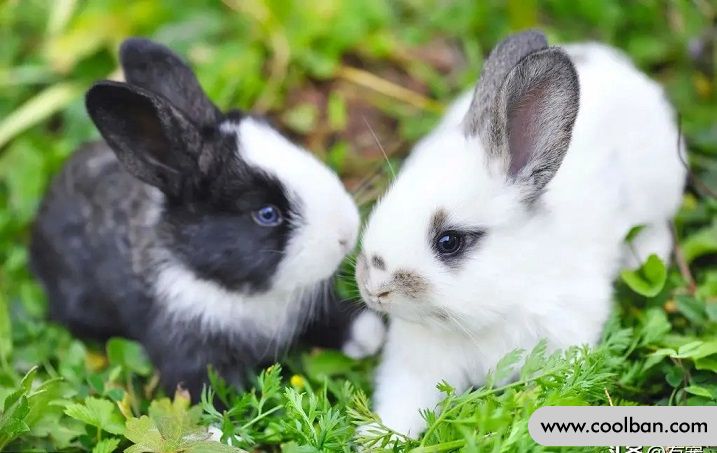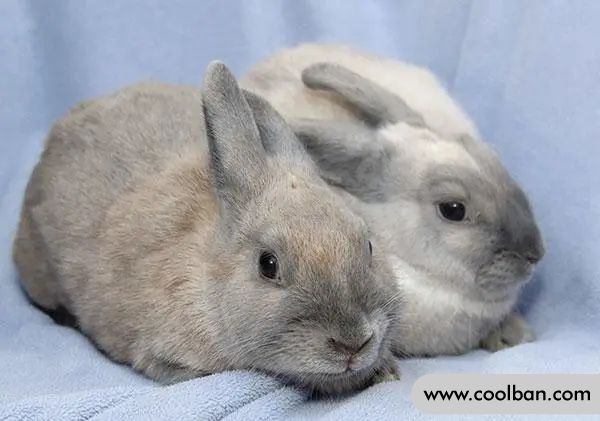How to raise Polish rabbits?
The Polish rabbit is native to Poland and is a very common breed of pet rabbits there. Because of its surprisingly small size, it can be tricky to take care of. At the same time, the Polish rabbit is also the smallest among the purebred pet rabbits, with a body length of no more than ten centimeters, which is very small.
Knowledge of raising rabbits in Poland
The size of the Polish rabbit is relatively small, which brings certain difficulties to breastfeeding. For bunnies, disease prevention is more important. Polish rabbits are relatively tough little animals. Generally, they are terminally ill when they become ill, so pay attention to the changes of rabbits at any time when raising them.
1. Can Polish rabbits take a bath?
Polish rabbits are timid and frightening animals, and there have been reports of rabbits dying from bathing. In fact, it's not that the rabbit can't take a bath, but the owner's behavior in the bath is too rude, which may scare the rabbit to death. Therefore, veterinarians recommend that rabbits be bathed only once every 1 to 2 months.
2. Feeding points of Polish rabbits
Polish rabbits do best with their nails trimmed once a month on average. If they exercise enough, they can extend the time depending on the situation. The staple food of rabbits is recommended to be grass-based, supplemented with sticks, and a small amount of vegetables and fruits can also be fed, but pears and grapes with too much water and too sweet taste should be avoided.
3. Polish Rabbit Disease Control
The diseases that Polish rabbits are susceptible to include colds (Bastardella), coccidiosis (diarrhea), hairballs, ear scabies, and plantar dermatitis. Rabbit owners should keep the breeding environment hygienic and ventilated to prevent the occurrence of diseases.

Polish rabbit breeding environment
Keeping Polish rabbits does not take up much space in your home. This is a small pet rabbit breed that needs more care from us. Polish rabbits are timid and are very particular about the layout of the environment.
1. Selection of Polish Rabbit Sand
First of all, try not to use the bottom of the net. It is best to put a soft pad or soft cloth at the bottom of the cage, because the Polish rabbit has a natural sensory soft pillow on its hind feet, which is used to detect the enemy's attack. Standing at the bottom of the cage for a long time will make the Polish rabbit's feet grow fleshy, and the foot shape will become splayed feet, which is not conducive to walking. In severe cases, it may resist being picked up. In addition, Polish rabbits will choose one of the four corners of the cage as a toilet seat, and the opposite corner is a bed. Just put a soft cloth on the bed and it will sleep well.
2. Arrangement of Polish Rabbit Toilet
Spreading wood bran is a designated action to absorb urine and prevent the shed rabbit hair from flying. Remember to change it frequently, otherwise Polish rabbits are prone to skin diseases, such as toe hair loss, calluses, etc. It's best to put wood chaff on your rabbit's toilet. To toilet train him, it's best to hold him in the toilet as soon as he poops, so he'll know where he's "convenient" later.

Polish rabbit feeding points
The most reasonable food combination for Polish rabbits is the ratio of green hay to rabbit food. Of course, the importance of clean drinking water cannot be forgotten at this time, so there are actually many food choices for Polish rabbits.
The pet rabbits seen in the market are basically more than 3 months old. Pet rabbit feeding at this stage is relatively simple. Generally, green and dry feeds are fed in a ratio of 1 to 2, and it is not recommended to buy 1-month-old young rabbits. Rabbits at this stage are in a period of high disease incidence and have not been completely weaned. Inadvertent feeding by novice can easily lead to death.
Rabbits from weaning to 3 months of age are called young rabbits. Young rabbits at this stage grow rapidly and have poor disease resistance, so special attention should be paid. Otherwise, growth retardation, easy to get sick and die. Weaning rabbits must be kept in a warm, clean, dry place, preferably a cage. In the initial stage of cage breeding, 3-4 rabbits can be raised in each cage. Feeding concentrates and high-quality hay made from bran, bean cakes, etc. is recommended.
Since the protein and fat in rabbit milk account for 10.4% and 12.2%, respectively, three times that of cow's milk, it is difficult for large rabbits to feed young rabbits. The feed to be fed should be clean and fresh, and the grass with mud should be washed and dried before feeding. When feeding, it is necessary to eat less and more meals, green feed 3 times a day, concentrated feed 2 times a day, and some mineral feed can be added.
